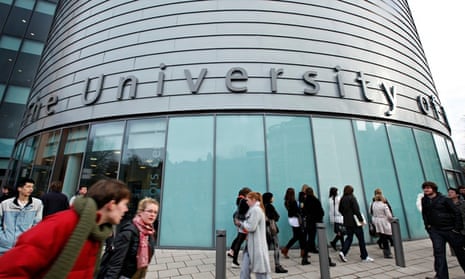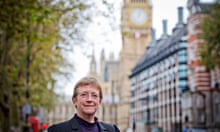The number of students securing degree places at UK universities and colleges topped half a million for the first time in 2014, with 512,400 people gaining places and a rise of 10% in those from the poorest households.
Universities are making record levels of offers to would-be students amid intense competition to attract good candidates, official figures from the Ucas admissions service suggest.
The number gaining places was up by nearly 17,000 students (3.4%) compared with last year and there was also a rise in the number of UK students accepted – up 3.2% to 447,500 this year compared with 2013.
Despite fears that the introduction of tuition fees would discourage less wealthy students to apply, the figures show that the poorest young people are now over 10% more likely to go to university than they were last year and a third more likely than five years ago.
“These trends are pushing the difference in entry rates between rich and poor to historic lows,” said the chief executive of Ucas, Mary Curnock Cook, who hailed the figures as a “stunning account of social change”. But she added that poorer young people are more likely to go to “lower tariff” (less selective) institutions.
The data also shows wide gaps between men and women, and differences according to where applicants live. And it suggests that an English teenager’s chances of going to a top university without scoring the best grades at A-level have dramatically increased.
Institutions are working “harder than ever” for entrants, according to Curnock Cook, who said that universities and colleges are “acutely conscious that their offers are increasingly having to compete against four others”.
The figures show that universities and colleges made a record 1.8m offers in 2014, up 6% on last year, while the number of applicants receiving five offers reached a record high – 137,300 applicants from the UK and EU were holding five offers.
At the same time, around 12,000 unconditional offers were made to 18-year-olds this year, about 1.4% of the total number of offers made to this age group, compared with around 0.4% last year.
The report also shows evidence of a shift in grade requirements over the past three years, with English 18-year-olds holding three B grades now standing around a one in three chance of going to a top university.
In 2011, around 17% of students with three Bs went to a “higher tariff” institution; last year it had risen to 32% and it increased slightly again this year to 35%.
Following a rise in recruitment, this year around 80% of institutions were taking the same numbers of students as they did last year, or slightly more.
Curnock Cook has warned that there is a “disquieting” gap between men and women going to university, which is continuing to worsen.
This gap has been growing since the 1990s, the admissions service suggested, with 18-year-old women now a third more likely to start a degree course than men. Young women are also 26% more likely to go to a higher tariff university.
This disparity is found across the country, with women more likely to go to university than men in 98% of constituencies.
A breakdown across England shows that in 27 constituencies, less than a fifth of 18-year-olds go to university, while in around 138, less than one in four study for a degree.
In two areas – Chesham and Amersham and Hitchin and Harpenden – half of young people go into higher education.
Nicola Dandridge, chief executive of vice-chancellors’ group Universities UK, said: “These are significant figures, with the number of students securing places exceeding half a million for the first time.
“It suggests a return to stability in university applications following the changes and dip in 2012. Applicants now have more options in the process than ever.”
The universities minister, Greg Clark, said: “Higher education is a transformational experience and that is why we are the first government to remove the limit on student numbers, lifting the cap on aspiration.
“Our reforms are helping ensure that all young people who want to study hard can benefit from higher education, irrespective of their background. There is still more to do to help those from disadvantaged backgrounds continue their studies but this is a definitive step in the right direction.”
Wendy Piatt, director general of the Russell Group, said: “It is encouraging to see another increase in the numbers of students from disadvantaged backgrounds being admitted to the universities which demand higher grades.
“But there is still more progress to be made. We now need many more students from non-traditional backgrounds to get good grades in the right subjects and apply to our universities. Russell Group universities are investing huge amounts of resource, time and effort to try to help make this happen and close the access gap.”






Comments (…)
Sign in or create your Guardian account to join the discussion